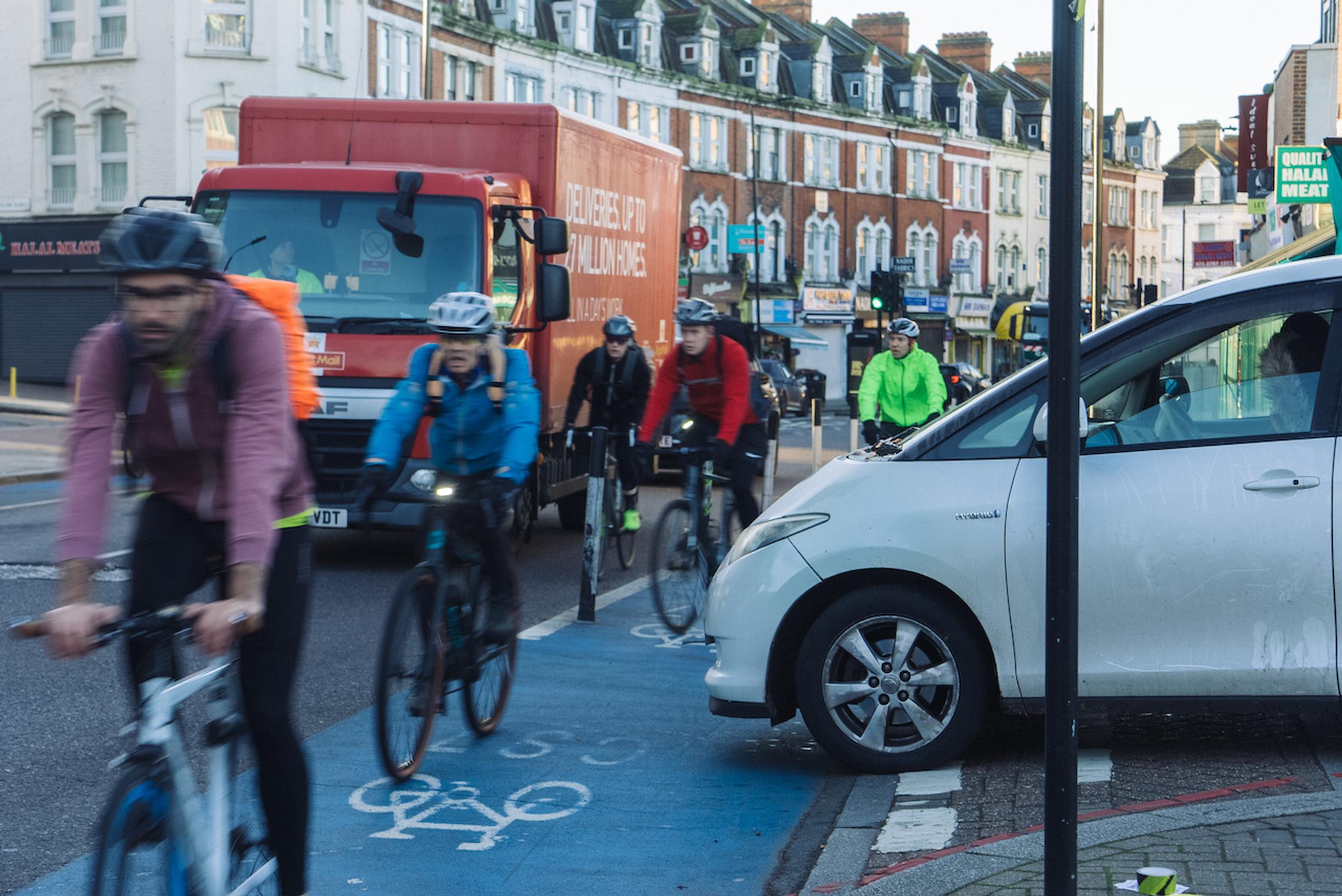

The good news from London, as indeed with other cities in the UK, is we’re increasingly seeing a relatively coherent and stable toolkit for street design being rolled out. We know what works for enabling active travel, for getting people to cycle – it’s not only enshrined in national and regional guidance such as LTN 1/20, but actually appearing on our streets.
If you want to cycle alongside a main road that’s heavy with motor traffic you need cycle tracks. If you want quiet, healthy residential neighbourhoods where people walk and cycle you need Low Traffic Neighbourhoods (LTNs). We also have bus lanes, bus gates and more. But what happens at junctions? Not only is there little consensus yet on appropriate designs, there’s very few junction schemes happening at all.
Junctions are not only where people walking, wheeling or cycling most frequently are hit, injured or killed, but they’re also the points of greatest ‘severance’ of a scheme and the hardest and costliest locations to change, it would seem.
The London Cycling Campaign (LCC) published a map highlighting 'Dangerous Junctions' for our campaigning work in inner London in 2022. However, the map was rudimentary, compiled manually. Working with volunteer Daniel Hills, we spent the following year developing far more useful and in-depth mapping using an algorithm to identify dangerous junctions across London. This uses DfT weighting for collision severity and clusters collisions to nearby junctions.
The resultant map spots the junctions with the worst collisions separately for pedestrians and those cycling across all of London, and down to borough level too.
Though still a work in progress, the map has already revealed some surprising and useful data on junctions and is being used by LCC local groups to talk to their councils. It’s surprising and useful, for instance, to know that the worst junction cluster for road danger in London is not a signalised massive roundabout – but a few side streets off a main road in Wandsworth that cross the cycle tracks on Cycle Superhighway 7.
Wandsworth Council should have implemented an LTN to deal with this cluster of ratruns, which have high volumes of vehicles turning in and out of side streets. High traffic levels, combined with the high volumes of cyclists using this route, means that the junction cluster has more severe collisions than any gyratory in London. This is an issue Wandsworth council remains shamefully silent on, with a relatively easy 'fix'. That said, fairly obviously, the map highlights plenty of multi-lane, complex signal horrors too.
In 2022, LCC also convened a summit of Britain’s finest minds on junctions to ask why junctions were so expensive and slow to deliver. The evet also discussed how to collectively deliver cheaper and better outcomes – for safety, to enable mode shift, and without grinding already congested roads to a halt, and published a report with these findings.
We heard that there is little consensus from transport authorities as to how to deliver better, safer junctions. Junctions are contested space, with engineers and designers often told to design to ten different masters – cycling safety v modelling v private motor traffic v pedestrian safety v bus journey times v cost etc.
We saw that while 'CYCLOPS' junctions rolling out in Manchester are spreading as good practice, their rollout remains far too slow (with only delivered in one London borough out of 33).
The summit also learnt that there were opportunities for trial schemes and temporary materials at junctions that have and could speed up delivery, saving lives, and we learnt that junction planning requires network planning and more. But most of all, we learnt that until the Government and individual transport authorities genuinely put safety first and enable real changes at junctions, the active travel 'revolution' cannot really deliver on its promise.
LCC's report on junction delivery and its Dangerous Junctions map are at: lcc.org.uk/junctions
Simon Munk is Head of Campaigns at London Cycling Campaign
He will be speaking at Building Better: Crossings & Junctions

TransportXtra is part of Landor LINKS
© 2025 TransportXtra | Landor LINKS Ltd | All Rights Reserved
Subscriptions, Magazines & Online Access Enquires
[Frequently Asked Questions]
Email: subs.ltt@landor.co.uk | Tel: +44 (0) 20 7091 7959
Shop & Accounts Enquires
Email: accounts@landor.co.uk | Tel: +44 (0) 20 7091 7855
Advertising Sales & Recruitment Enquires
Email: daniel@landor.co.uk | Tel: +44 (0) 20 7091 7861
Events & Conference Enquires
Email: conferences@landor.co.uk | Tel: +44 (0) 20 7091 7865
Press Releases & Editorial Enquires
Email: info@transportxtra.com | Tel: +44 (0) 20 7091 7875
Privacy Policy | Terms and Conditions | Advertise
Web design london by Brainiac Media 2020